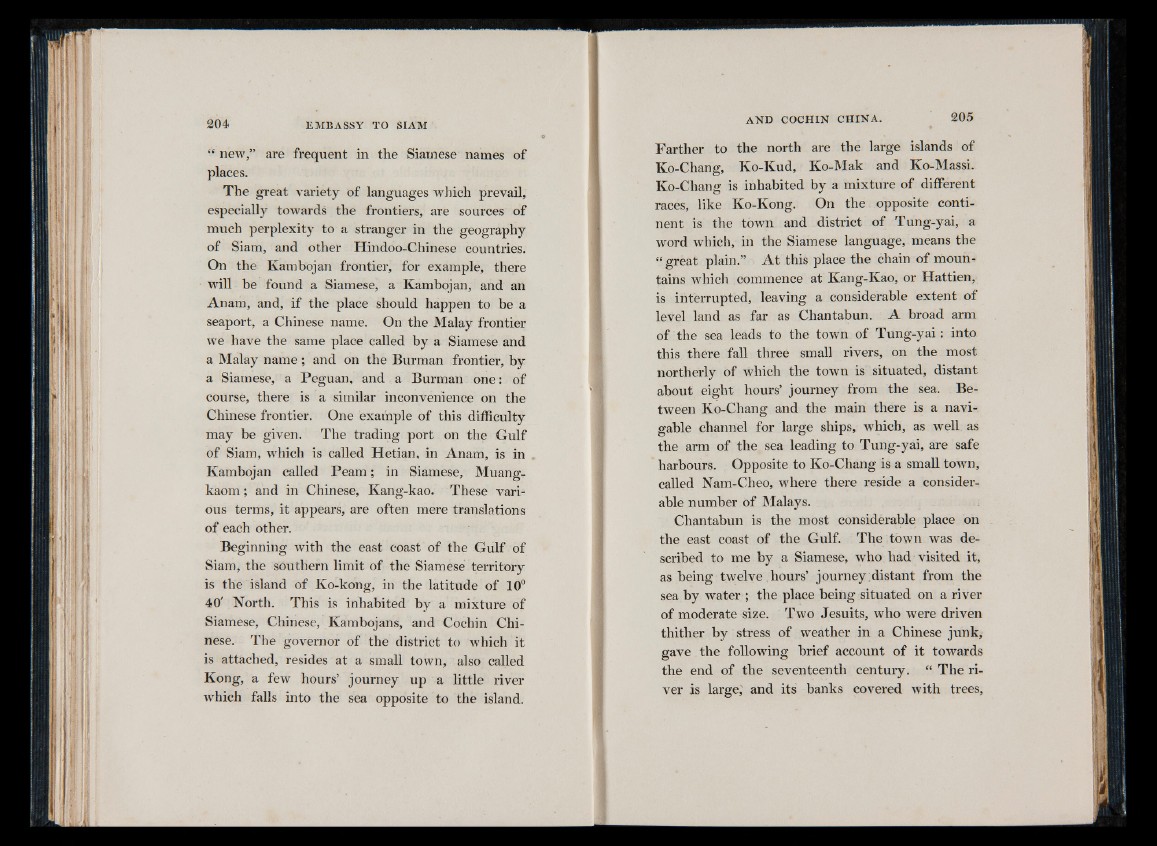
“ new,” are frequent in the Siamese names of
places.
The great variety of languages which prevail,
especially towards the frontiers, are sources of
much perplexity to a stranger in the geography
of Siam, and other Hindoo-Chinese countries.
On the Kambojan frontier, for example, there
will be found a Siamese, a Kambojan, and an
Anam, and, if the place should happen to be a
seaport, a Chinese name. On the Malay frontier
we have the same place called by a Siamese and
a Malay name ; and on the Burman frontier, by
a Siamese, a Peguan, and a Burman one: of
course, there is a similar inconvenience on the
Chinese frontier. One example of this difficulty
may be given. The trading port on the Gulf
of Siam, which is called Hetian, in Anam, is in *
Kambojan called Pe am ; in Siamese, Muang-
kaom; and in Chinese, Kang-kao. These various
terms, it appears, are often mere translations
of each other.
Beginning with the east coast of the Gulf of
Siam, the southern limit of the Siamese territory
is the island of Ko-kong, in the latitude of 10°
40' North. This is inhabited by a mixture of
Siamese, Chinese, Kambojans, and Cochin Chinese.
The governor of the district to which it
is attached, resides at a small town, also called
Kong, a few hours’ journey up a little river
which falls into the sea opposite to the island.
Farther to the north are the large islands of
Ko-Chang, Ko-Kud, Ko-Mak and Ko-Massi.
Ko-Chang is inhabited by a mixture of different
races, like Ko-Kong. On the opposite continent
is the town and district of Tung-yai, a
word which, in the Siamese language, means the
“ great plain.” A t this place the chain of mountains
which commence at Kang-Kao, or Hattien,
is interrupted, leaving a considerable extent of
level land as far as Chantabun. A broad arm
of the sea leads to the town of Tung-yai: into
this there fall three small rivers, on the most
northerly of which the town is situated, distant
about eight hours’ journey from the sea. Between
Ko-Chang and the main there is a navigable
channel for large ships, which, as well as
the arm of the sea leading to Tung-yai, are safe
harbours. Opposite to Ko-Chang is a small town,
called Nam-Cheo, where there reside a considerable
number of Malays.
Chantabun is the most considerable place on
the east coast of the Gulf. The town was described
to me by a Siamese, who had visited it,
as being twelve hours’ journey;distant from the
sea by Avater ; the place being situated on a river
of moderate size. Two Jesuits, who were driven
thither by stress of weather in a Chinese junk,
gave the following brief account of it towards
the end of the seventeenth century. “ The river
is large,' and its banks covered with trees,